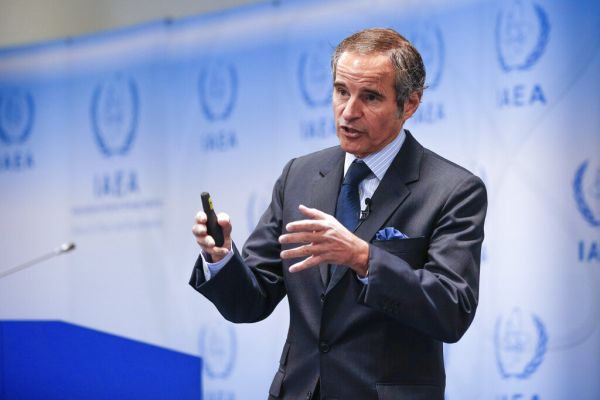Naftali Bennett welcomes IAEA’s rebuke that “exposes Iran’s true face.”
By David Hellerman, World Israel News and Associated Press
Iran plans to install two new cascades of advanced centrifuges that will allow Tehran to rapidly enrich more uranium, the UN’s nuclear watchdog said Thursday, the latest escalation in the standoff over the country’s atomic program.
The decision to add the two IR-6 centrifuges cascades at its underground Natanz nuclear facility comes as countries at an International Atomic Energy Agency meeting in Vienna voted Wednesday night to censure Iran.
The rebuke deals with what the watchdog refers to as Iran’s failure to provide “credible information” over man-made nuclear material found at three undeclared sites in the country.
But even before the vote, Iran shut off two devices the IAEA uses to monitor enrichment at Natanz. Iranian officials also threatened to take more steps amid a years-long crisis that threatens to widen into further attacks.
Israeli officials praised the IAEA’s censure.
“This is a significant decision that exposes Iran’s true face,” Prime Minister Naftali Bennett said. He called for Iran to be brought before the UN Security if Tehran is not more forthcoming with information about its nuclear program.
Defense Minister Benny Gantz urged the international community to take “concrete steps” against Iran.
“Every monitoring device that is turned off should be met with diplomatic and economic sanctions. We must stand united and work closely together in facing Iranian regional and global aggression,” said a statement issued by Gantz.
Iran’s Foreign Ministry meanwhile criticized the censure as a “political, incorrect and unconstructive action.”
An Iranian official earlier warned IAEA officials that Tehran was now considering taking “other measures” as well.
The IAEA said Thursday that its Director-General Rafael Mariano Grossi told members that Iran informed the agency that it planned to install two new cascades of the IR-6 at Natanz. A cascade is a series of centrifuges hooked together to rapidly spin uranium gas to enrich it.
An IR-6 centrifuge spins uranium 10 times as fast as the first-generation centrifuges that Iran was once limited to under its 2015 nuclear deal with world powers. As of February, Iran already had been spinning a cascade of IR-6s at its underground facility at Fordo, according to the IAEA.
At Natanz, located some 200 kilometers (125 miles) south of the capital, Tehran, Iran earlier said it planned to install one cascade of IR-6s. The IAEA said it “verified” the ongoing installation of that cascade Monday, while the newly promised two new cascades had yet to begin.
While uranium needs to be only 3.67 percent pure to generate nuclear power, Iran has enriched its uranium stockpile to 60%, a degree of purity that no country without an atomic weapon has pursued. A nuclear bomb requires uranium to be enriched to 90% purity.
The controversial Joint Comprehensive Plan of Action (JCPOA) of 2015 promised Iran economic incentives in exchange for limits on its nuclear program. Former president Donald Trump withdrew the U.S. from the agreement in 2018. Negotiating a return to the nuclear agreement has long been a key foreign policy goal of U.S. President Joe Biden.
Israel, the Gulf states and Saudi Arabia oppose an American return to the JCPOA agreement.
International negotiations in Vienna have been stalled since April. Israel has threatened in the past that it would carry out a preemptive strike to stop Iran — and already is suspected in a series of recent killings targeting Iranian officials.




